Reeves' Muntjac
Muntiacus reevesi
Class
Mammalia
Order
Artiodactyla
Family
Cervidae
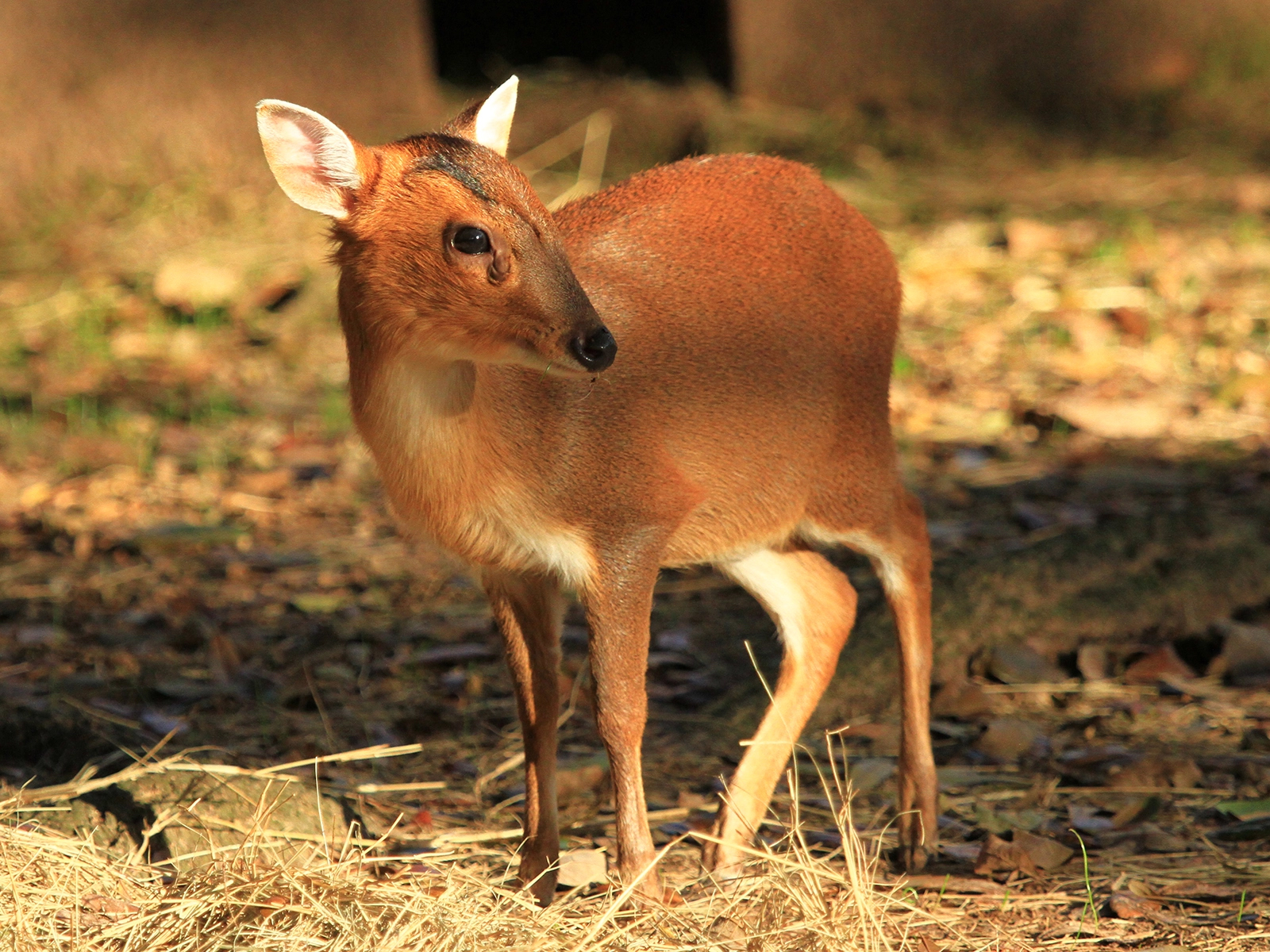
Mammalia
Artiodactyla
Cervidae
Southern China and Taiwan
Length: 31 - 39 in
Height: 17 - 22 in (at shoulder)
Weight: 24 - 35 lbs
Deciduous forests
1 (rarely 2) fawn
Gestation: Approx. 7 months
Leaves, fruit, bark, fungi, and herbs
Least Concern
They are believed to have appeared 15 to 35 million years ago.
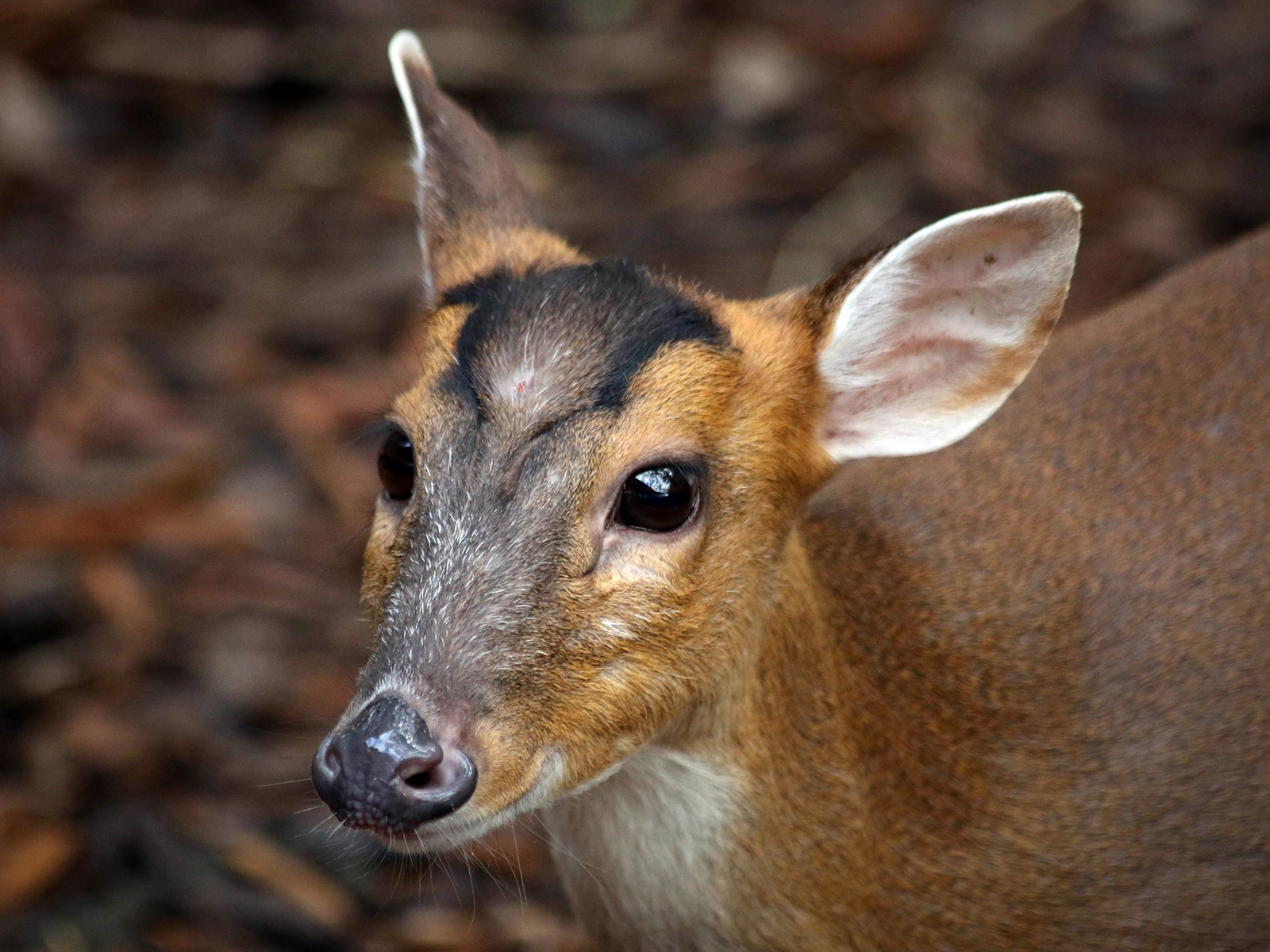
Reeve's muntjacs are known as "barking deer". They make deep bark-like sounds when on alert.
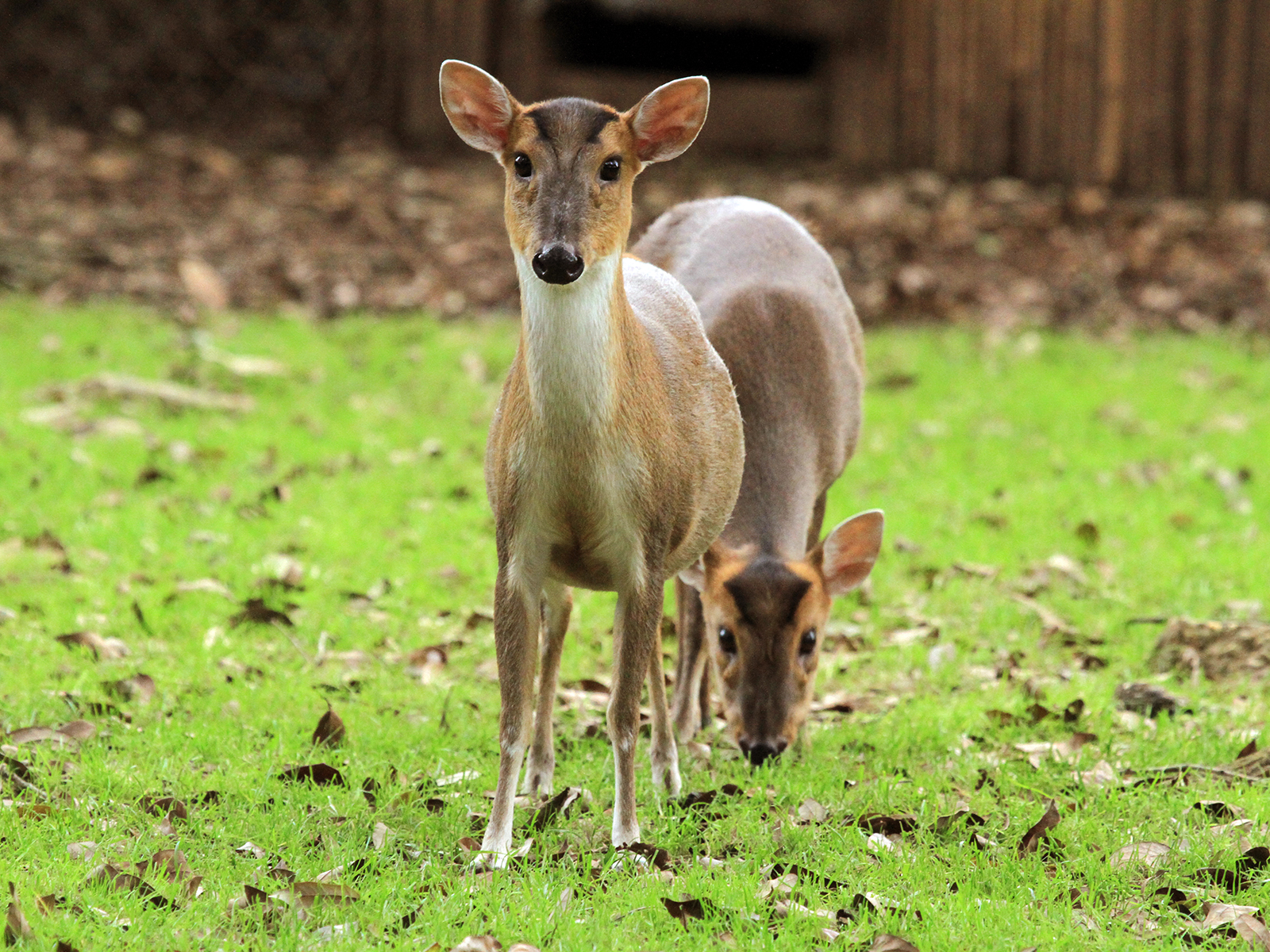
They are primarily crepuscular (active at dawn and dusk). They have a long tongue that is used to strip leaves from bushes. They scent-mark their territories with secretions from their preorbital glands. The upper canine teeth of the males are elongated tusks that serve as excellent defense weapons, capable of causing serious injury to predators.
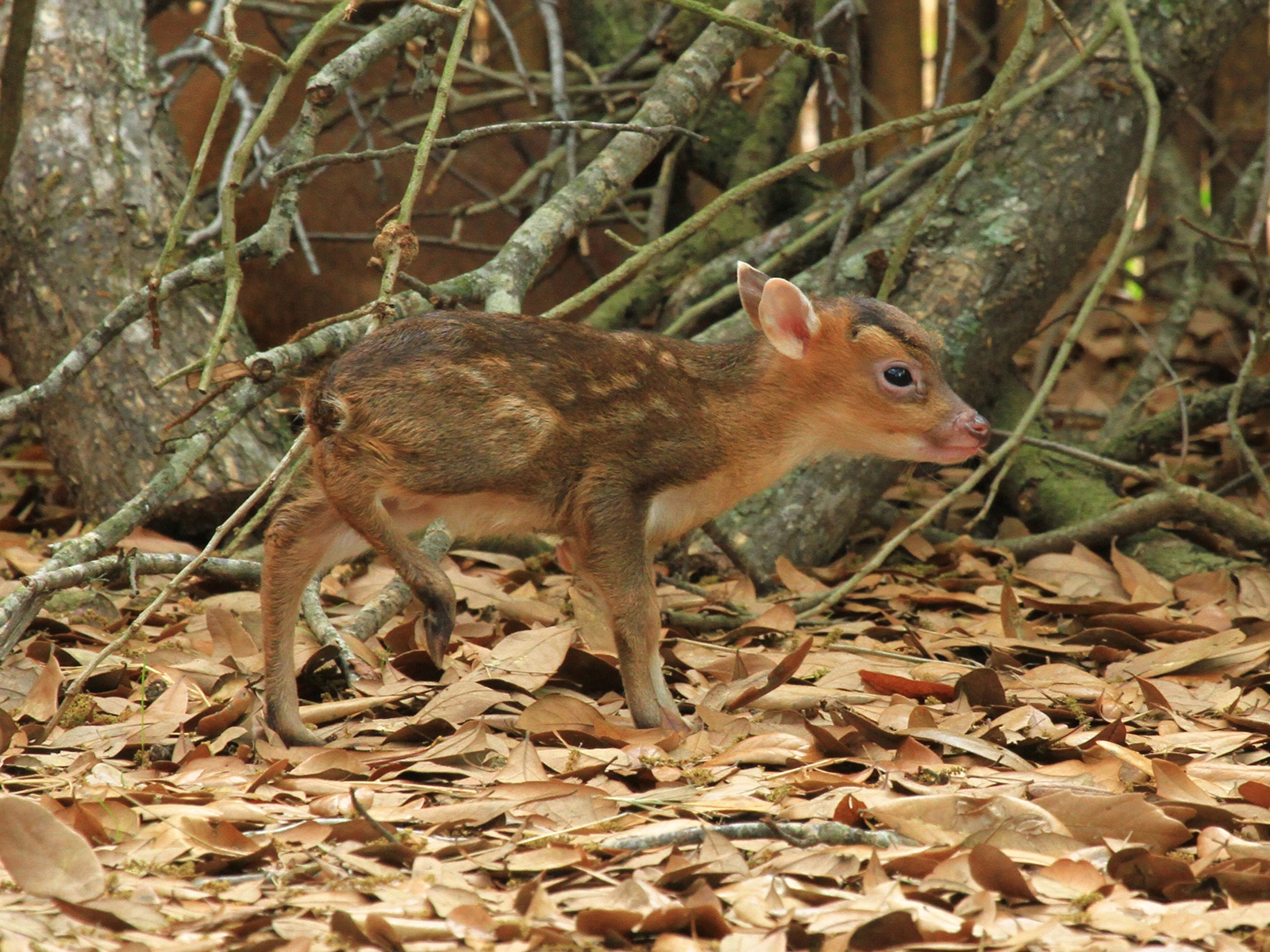
Muntjac fawns weigh around 22 ounces at birth and have spotted coats. Young develop rapidly and are weaned within about four months. By 6 months, they are independent and will leave their mother’s territory. They reach sexual maturity at six months.
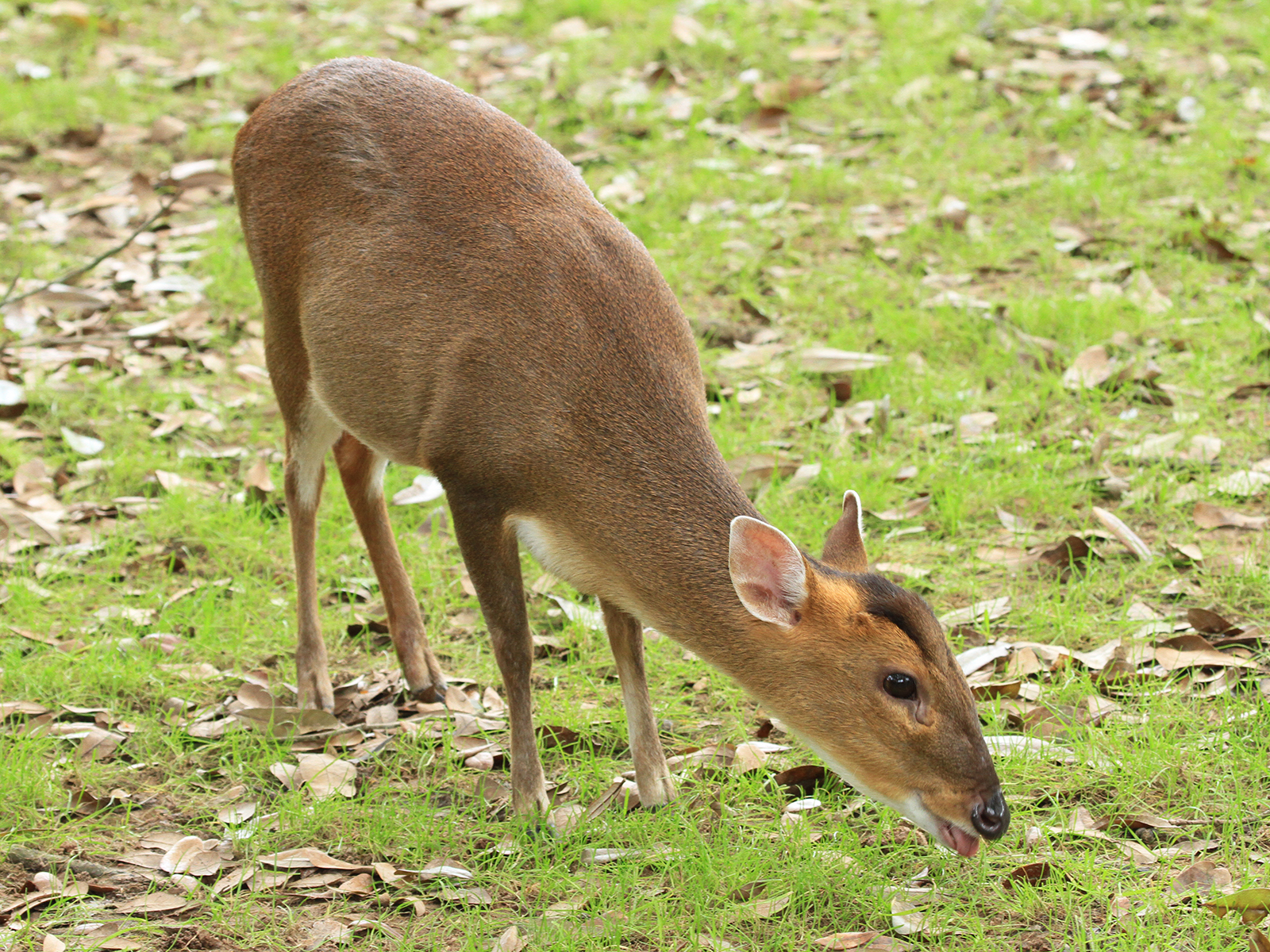
In its native range of southeastern China and Taiwan, the primary threats are habitat loss and hunting.
However, in other parts of the world, such as the United Kingdom, Ireland, and some parts of Europe, the species is considered a non-native invasive species. In these areas, they can negatively impact local ecosystems by over-browsing on vegetation, which prevents the regeneration of woodlands and affects other wildlife.